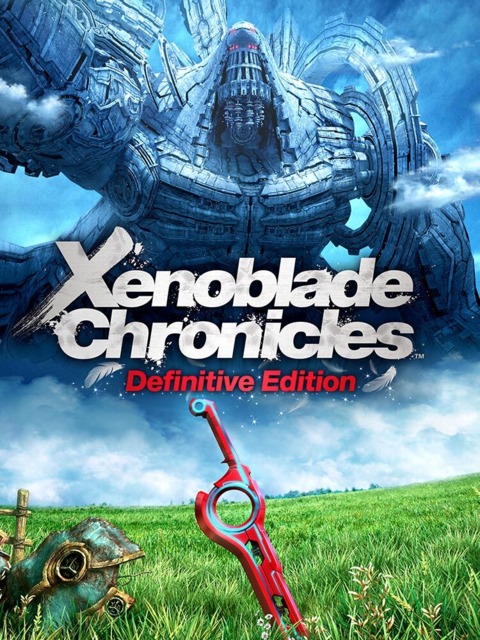A fantastic epic that is unfortunately dated and padded beyond belief
Xenoblade Chronicles on the Wii almost never made it out of Japan without the work of some really passionate fans. The story of how a group of fans convinced Nintendo to localize a 60+ hour JRPG on the end of Wii’s lifecycle is a story of legend, but I digress. The original game did not run well. It had poor framerates, long loading times and was in a sub HD resolution. Ten years after its initial release on the Wii, the Definitive Edition on the Switch adds many graphical enhancements and quality of life improvements that truly fulfills the original game’s ambition. The game is a wildly imaginative epic. The designers at Monolithsoft have created a world that easily rivals the productions from Bethesda and Rockstar.
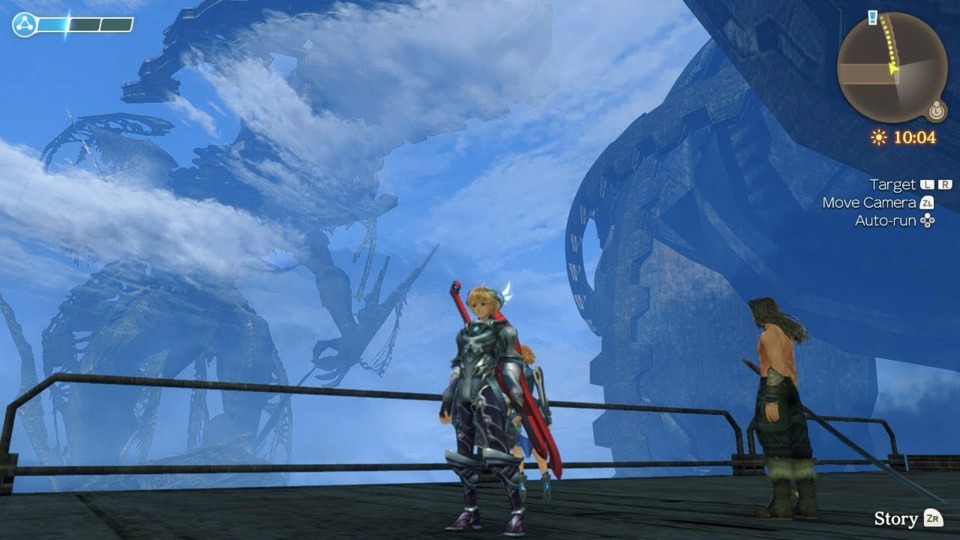
Unfortunately even with the Definitive Edition makeover, the game feels sorely dated: There are a plethora of boring MMO style fetch quests. The writing is painfully verbose. And a large swath of the game is padded with time consuming mechanics. Despite all of this, there is no other Nintendo exclusive quite like Xenoblade Chronicles. The gameplay is complex, the world is fantastic to explore and the major story beats are profoundly interesting.
The entire Xenoblade universe takes place in a boundless ocean populated by two enormous titans, the Bionis and the Mechonis. Eons ago, these two titans fought each other in an endless duel until they mortally wounded each other at the same moment. Both titans became dormant and as the years passed, life thrived on both giants.
As if to repeat the endless battle of the titans, the Homs, beings living on the Bionis are at war with the Mechons from the opposing titan. The Mechons have the advantage, they are plated with armor so strong that it renders most Homs weaponry useless. Luckily the Homs have a secret weapon to defeat them, the Monado. The Monado is a beam sword capable of easily slicing through Mechon armor. The Monado is so powerful however that it injures the wielder. The Homs were victorious but with a heavy cost, Dunban, the strongest Homs warrior, was left crippled after using the Monado.
You play as Shulk during a time of peace. He lives in Colony 9 located on Bionis’s shin. He is a strange fellow who would rather dig through old Mechon scraps and research about the Monado than socialize like a normal young adult. After completing routine maintenance work with his childhood friends, they witness their colony being attacked yet again by the Mechons. Unfortunately, Dunban can no longer wield the Monado and Shulk gets the opportunity to use the mythical blade. Despite not being a seasoned warrior, he is able to wield the Monado with ease. Even more interesting is that the Monado grants Shulk the ability of foresight, giving him an uncanny advantage fighting the Mechon. All is well until Shulk and friends encounter a special faced Mechon. Oddly enough, the Monado is useless against this foe. They were still able to drive the Mechons away, but the colony sustained severe casualties. Shulk and his friends, with the Monado in tow, decide to pursue this faced Mechon to avenge their fallen comrades.
The gameplay in Xenoblade most resembles those found in MMORPGs. The maps are wide open fields with enemies of various levels strewn about. There is a day and night cycle as well as changes in weather that determines what monsters spawn. Shulk and his teammates engage in combat by entering the enemies’ field of vision, making noise in their vicinity or intentionally attacking them. You only control Shulk or the party leader, with the rest of your members controlled by the AI. In combat, attacks are automatic with the option to use Arts that run on cooldowns. Using too many Arts in succession will draw aggro towards that user. In addition, some Arts grant special bonuses such as double attack damage when facing an opponent’s rear or dazing an enemy if it has been toppled. There is also a Chain Attack gauge that can be used to momentarily pause combat to dish out even more damage or used to revive teammates. This is only the surface level description of the combat mechanics and the game provides a staggering amount of tutorials to explain it all.
A recurring theme in Xenoblade is that every system in the game is complex and expansive. This is not a beginner’s RPG. There are unique Arts to configure per character, Skill Trees to assign, numerous pieces of armor to equip and dozens of gems to socket. Each system is intricately designed so they have an intentional purpose and do not overlap with one another. A boss battle that seems impossible at first can be won by tuning the party with the appropriate loadout. My favorite moments of the game were challenging optional bosses, losing multiple times, only to be victorious at the end after making tweaks in my party lineup. I personally find it innately satisfying to overcome a challenge through clever customization versus mindlessly grinding monsters to eventually outlevel any opponent.
As much as I appreciate the complexity in the game, some aspects feel unnecessarily drawn out. An example is that you can level Arts up to 12 times. Leveling up Arts only adds benefits like increasing damage or decreasing the cooldown. The maximum level for an Art could have been reduced to say 6, since the upgrades don’t add any meaningful differences. In another example, crafting gems is a laborious process. First you have to go to specific areas of the map to mine for gems. Next navigate back to Colony 9 to the Gem Factory. And then play a mini-game where you have to pair characters together to craft the gems.
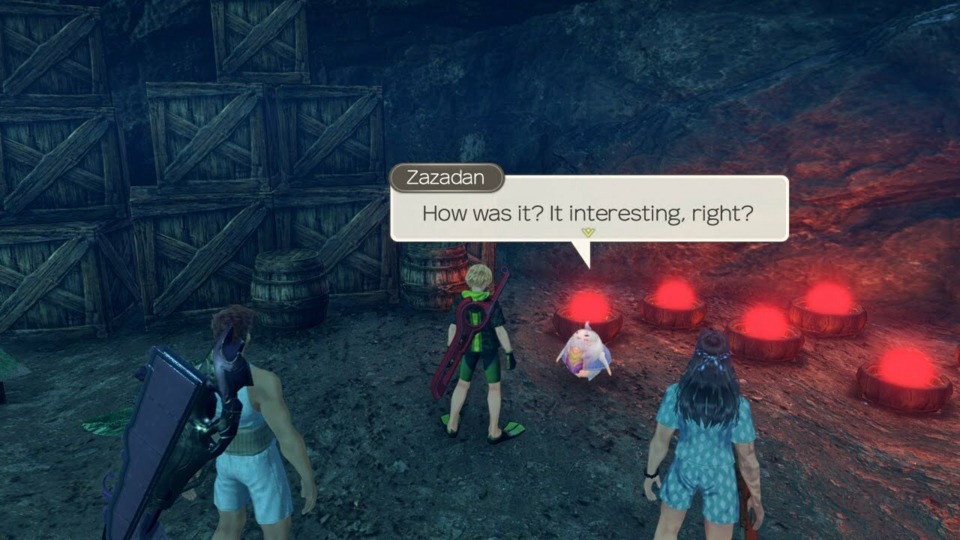
A wide range of mechanics in the game is solely introduced for padding without meaningful depth. There are dozens of collectibles in the game to fill out the Collectopaedia. Hundreds of fetch quests involving killing X monsters or collecting Y items. And an unnecessarily complex Affinity System. The Affinity System tracks your party members’ relationships as well as all of the NPC relationships. Building the affinity between your characters enables you to view cutscenes. These cutscenes range from comedic banter to plot development. The problem is you barely get to view these Heart-to-Heart cutscenes until about 40 hours in. These scenes require a high level of affinity between characters and most are only viewable after certain story points. Affinity is built by having characters participate in combat, complete optional side quests together or by gifting dozens and dozens of collectibles based on a character’s preferences. And even after you complete all the requirements, you have to navigate your way to the exact location to watch the Heart-to-Heart cutscene.
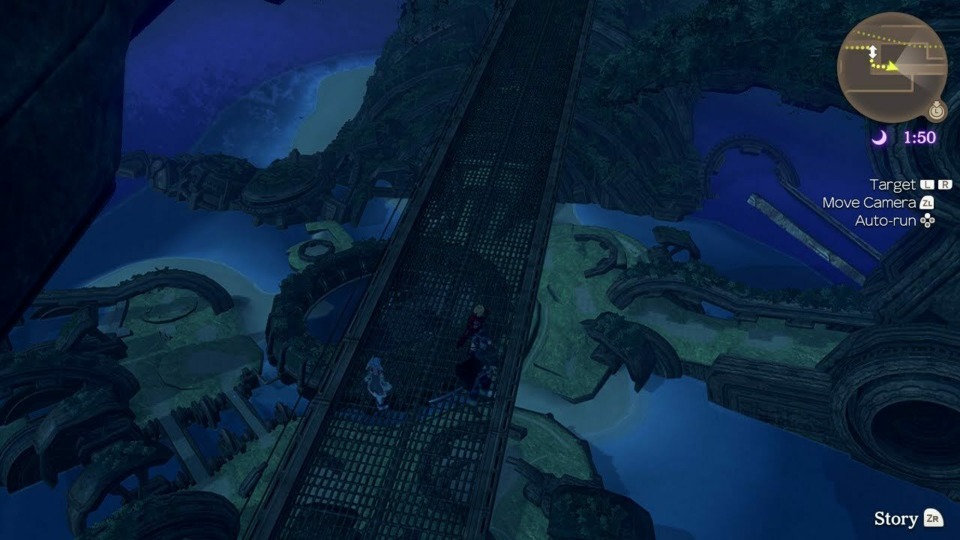
At first glance, Xenoblade seems on track to be another typical JRPG but with more of everything. The protagonist wields a ridiculously large sword. There is a childhood love interest. There is an enigmatic godlike figure who wants to destroy the world (or in this case Bionis). And in the end, the power of friendship is used to overcome evil. What sets Xenoblade apart from its contemporaries is the setting and the moment to moment story beats. Shulk isn’t simply going from point A to point B but scaling a massive titan. The environment and level designs are wonderfully creative. It is often possible to see the limbs of Bionis or the dormant body of Mechonis in the horizon. This isn’t just the famous Skyrim adage of “You see that mountain, you can go there”, but more along the lines of “You see that very large bridge? That’s actually Mechonis’ sword and you can walk on it”. There were countless times where I traveled out of the way to explore the environments and flora. And the game often rewards you for it by granting bonus EXP or an optional boss. Another subtle but cool effect is how cutscenes take into account the time of day, weather conditions and outfits the party is currently wearing.
The story and its characters are wonderfully complex and interesting. Each character Shulk meets along the way has their own personal backstories and motivations for defeating the Mechons. There is wonderful chemistry between characters such as Shulk and Fiora, and Reyn and Sharla. However Riki stands out as a major sore thumb. Riki is a Nopon, a race of hamster-like rabbit-eared furballs who live in a giant tree and speak with broken grammar. Riki is the comedic relief in the game. The only reason he joins Shulk is because he is in financial trouble and forced to be a “Heropon” to repay his debts. Personally I found the voice acting for Riki and the Nopons to be chalkboard scratching bad. Riki is not charmingly goofy like Teddie is from Persona 4. He is just plain annoying to listen to and not funny. Essentially he is this game’s Jar Jar Binks. This problem can be remedied by switching to the Japanese vocals, however you won’t be able to listen to the excellent English voice acting from the rest of the cast.
The Definitive Edition is a much needed upgrade to the original Xenoblade Chronicles. The characters have been overhauled to more closely resemble the Anime style of Xenoblade Chronicles 2. The resolution and framerate has improved drastically. There are quality of life improvements like automatically marking objectives on the map and a dotted trail to help make it easier to navigate to the next quest marker. A much better and cleaner UI helps make the complicated systems more decipherable. There is the inclusion of newly arranged soundtracks. A casual mode for players who simply want to enjoy the story. A bonus area where you fight in time trials for unique costumes and gems. And a new epilogue chapter called Future Connected.
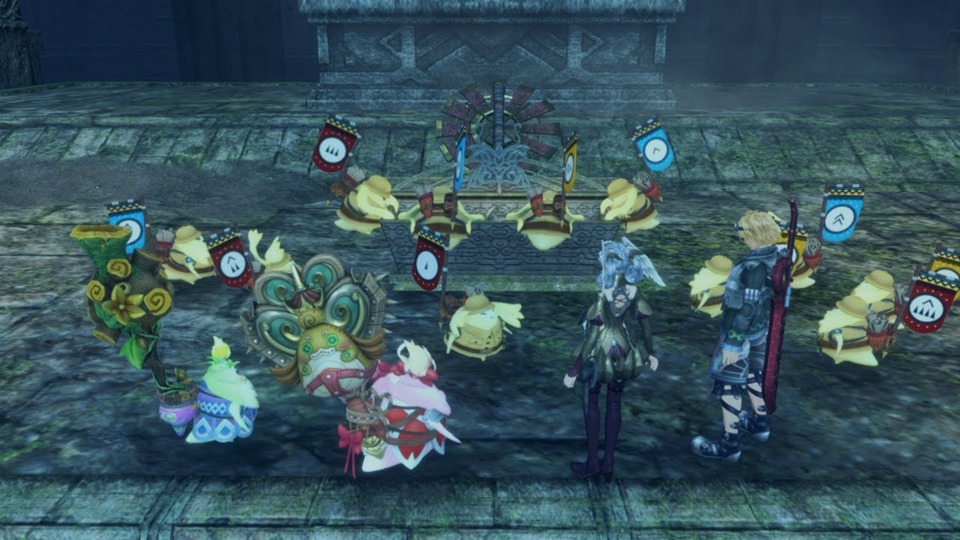
The overall upgrade is good, but not great. Xenoblade Chronicles: DE does not look like a game built for the Switch. Character faces are remarkably detailed and emotive, but many of their clothing designs are low textured. There is a noticeable amount of pop-in in large environments. The handheld mode does not run very well and the framerate takes a hit when there are a lot of effects happening. The AI is not good. They will sometimes fall off ledges or stand in hazardous areas during combat. The AI also has trouble controlling spellcasters. It often places them right in harm's way. It has them spend Arts way too quickly drawing aggro away from the tanks. The AI also seems to make them avoid using specific Arts altogether. The only way to address this is to either never include spellcasters in your lineup or to manually play as them. To be clear these AI problems are minor nitpicks and only noticeable when you are underleveled.
Future Connected is a meaty epilogue chapter running around 6-8 hours and helps bring a closure to Melia’s arc. It's an interesting piece of content because it simplifies a lot of the mechanics in the original game. The quests are moderately paced. Chain Link attacks, Skill Trees, the Affinity System and Gem Crafting are removed entirely. Earning gems is as easy as going to the nodes and mining them. Quiet Moments replace Heart to Hearts and are all fully voiced. The simplification is welcome especially since you are only limited to 4 characters and the epilogue is relatively short compared to the main game.
The bonus epilogue also introduces unexpected problems. It is much more Nopon heavy than the base game, with the playable Nopons, Nina and Kino as well as the Ponspectors. So if you didn’t like Riki, be warned because you are going to have to deal with more Nopon nonsense. The quest rewards are less substantial. Most quest rewards are costumes with worse stats than what can be purchased from stores. And the plot itself features a generic JRPG villain that doesn't match the nuance and complexity of the antagonist in the base game.
I was immersed by the main plot and enjoyed the combat in Xenoblade Chronicles: DE but also disappointed on how long it takes to complete this game. Not all of my time spent with the game was particularly engaging and entertaining. The main problem is that it is easy to be underleveled in the late game if you skip side quests. It is near impossible to even hit enemies once you are about 8 levels behind. Unfortunately most of the side quests are not interesting and I often found myself mindlessly grinding monsters or picking up collectibles. I would navigate back and forth through waypoints to get monsters and items to respawn. And constantly change the time to get the right weather condition so that a specific monster would appear. It’s the kind of busywork suited while listening to a podcast or on a long commute.
The writing and dialog is terribly long and repetitive. Characters have a tendency to over explain everything. A running joke is that Reyn is a meathead and constantly needs difficult things explained to him. It’s funny the first time it happens, but gets old quick when it happens for the 5th time. There are dozens of occasions where characters will melodramatically shout out someone’s name and ask if they are okay. The same quips and lines in battle are repeated too often. The game desperately needed an editor to tighten and vary the script.
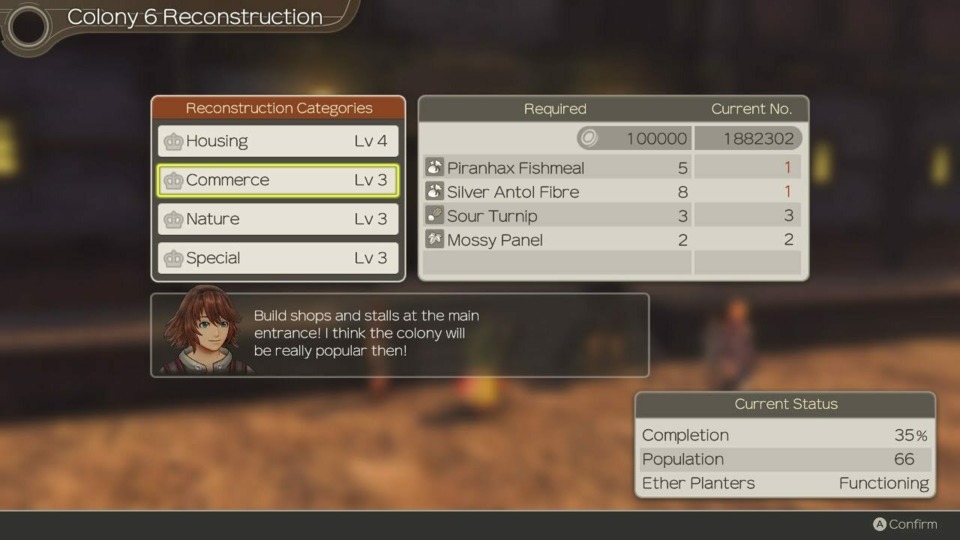
The acquisition of side quests is incredibly dated. It does not make sense why I have to talk to the same NPC consecutively for 3 times to get all of their side quests when talking to them once should suffice. Getting all of the quests in a town is a tedious process. First you have to go through the town during the day, then change to night time and repeat the same process because different quest givers appear depending on the time. A quest board would have easily streamlined this process.
Xenoblade Chronicles: Definitive Edition is one of the most memorable, epic games I’ve played. It is also a dated game and I felt like my time playing it was not valued. I spent countless hours mindlessly grinding away to complete side quests, playing a mini-game to craft gems, filling up the Collectopaedia, maximizing the Affinity with other characters and listening to how Shulk can predict the future for the 20th time. I spent just as much time doing these boring side activities than actually enjoying the main storyline. I regret not turning on Casual Mode sooner to speed through these frustrations but my ego got the better of me. The journey and the payoff at the end in Xenoblade Chronicles: DE is worth it, but be prepared to trudge through a lot and I truly mean a lot of pointless filler.
